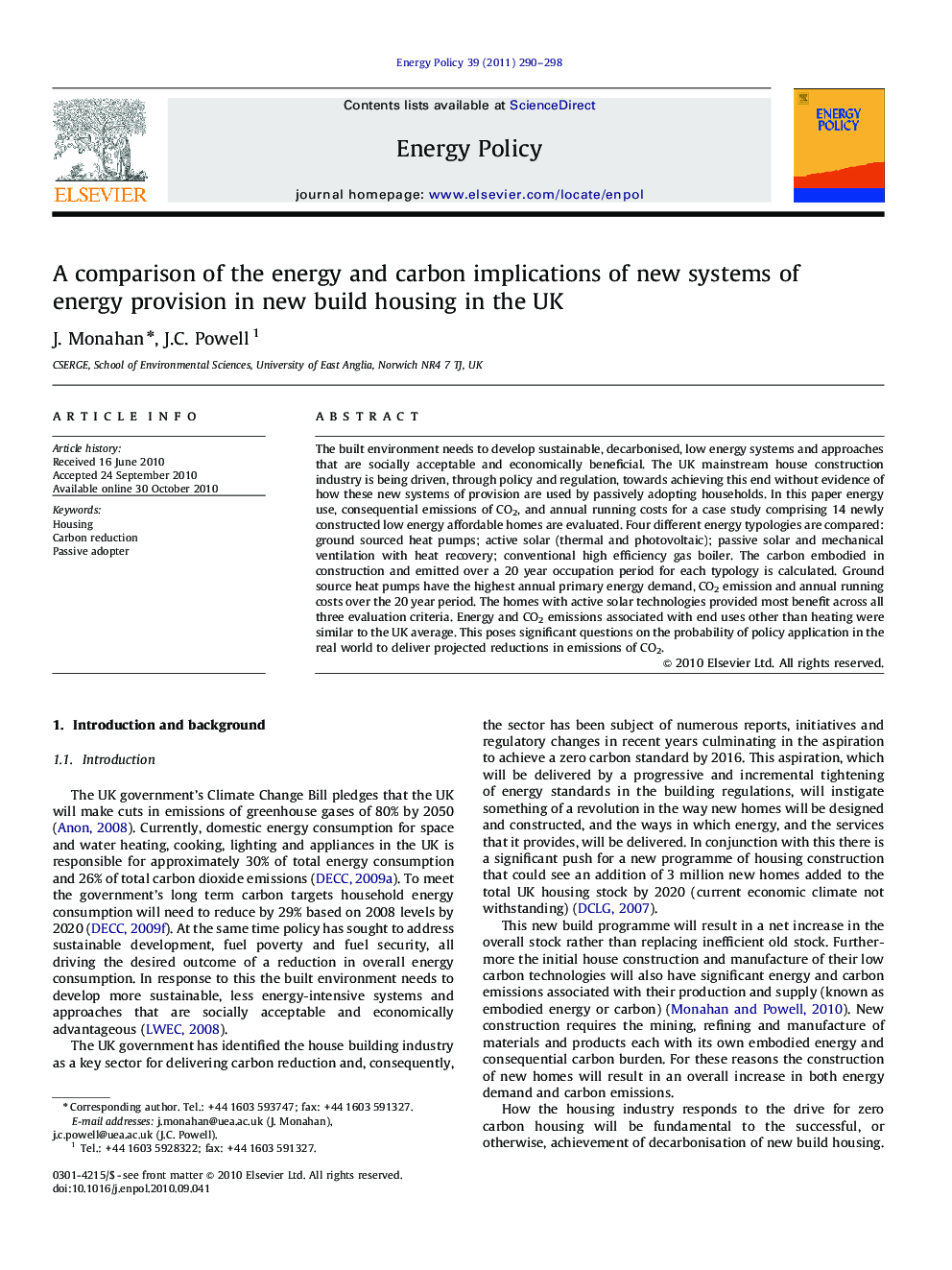| کد مقاله | کد نشریه | سال انتشار | مقاله انگلیسی | نسخه تمام متن |
|---|---|---|---|---|
| 995954 | 936280 | 2011 | 9 صفحه PDF | دانلود رایگان |

The built environment needs to develop sustainable, decarbonised, low energy systems and approaches that are socially acceptable and economically beneficial. The UK mainstream house construction industry is being driven, through policy and regulation, towards achieving this end without evidence of how these new systems of provision are used by passively adopting households. In this paper energy use, consequential emissions of CO2, and annual running costs for a case study comprising 14 newly constructed low energy affordable homes are evaluated. Four different energy typologies are compared: ground sourced heat pumps; active solar (thermal and photovoltaic); passive solar and mechanical ventilation with heat recovery; conventional high efficiency gas boiler. The carbon embodied in construction and emitted over a 20 year occupation period for each typology is calculated. Ground source heat pumps have the highest annual primary energy demand, CO2 emission and annual running costs over the 20 year period. The homes with active solar technologies provided most benefit across all three evaluation criteria. Energy and CO2 emissions associated with end uses other than heating were similar to the UK average. This poses significant questions on the probability of policy application in the real world to deliver projected reductions in emissions of CO2.
Research Highlights
► Heat pumps have the highest primary energy demand, CO2 emissions and running costs.
► Solar technologies have greatest benefit to passively adopting households.
► No difference in energy demand of non heating end uses compared with UK average.
► Reductions attributed to technology not behaviour in passively adopting households.
► Policy may not deliver projected reductions in CO2 emissions in real world.
Journal: Energy Policy - Volume 39, Issue 1, January 2011, Pages 290–298